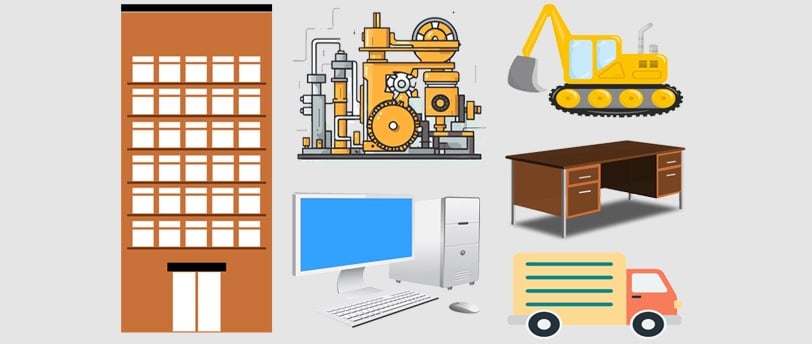📞 (858) 308-1100
✉️ contact@veslav.com
How to Record New Asset Purchases and Dispose of Fixed Assets in QuickBooks Online
2/28/20253 min read


When your business purchases equipment, vehicles, or other fixed assets, or disposes of old assets, it’s important to record these transactions properly in QuickBooks Online (QBO). Proper tracking ensures accurate financial statements and tax compliance.
This post will guide you through:
How to record a new fixed asset purchase
How to dispose of a fixed asset when you sell, trade in, or retire it
What Are Fixed Assets?
Fixed assets are long-term assets used in business operations, such as:
✔ Vehicles
✔ Machinery and equipment
✔ Office furniture and fixtures
✔ Buildings and land
📌 Fixed assets are different from regular expenses because they provide long-term value and are recorded as assets on the balance sheet. Unlike office supplies or minor purchases, they are not immediately expensed but depreciated over time.
How to Record a New Fixed Asset Purchase in QBO
Step 1: Set Up a Fixed Asset Account
Before recording the purchase, ensure you have the right Fixed Asset account in your Chart of Accounts:
➤ Go to Settings ⚙ → Chart of Accounts
➤ Click New
➤ Select Fixed Assets as the Account Type
➤ Choose a Detail Type (e.g., "Machinery and Equipment" or "Vehicles")
➤ Name the account (e.g., "Company Truck - 2025")
➤ If tracking depreciation separately, leave the balance at $0
💡 Tip: Some businesses create separate asset accounts for major purchases instead of lumping everything into a general "Fixed Assets" account.
Step 2: Record the Asset Purchase
A. If You Paid in Full
Go to + New → Expense or Check
Select the vendor (or create a new one)
Choose the Fixed Asset account you set up in Step 1
Enter the purchase amount
Attach a copy of the invoice or receipt for reference
Click Save and Close
💡 Tip: If the asset purchase includes taxes, shipping, or other costs, add these to the same entry.
B. If Purchased with a Loan or Financing
Go to + New → Journal Entry
Debit the Fixed Asset account for the purchase price
Credit the Loan Payable (Liability) account for the loan amount
If a down payment was made, credit the Bank Account for the amount paid
Click Save and Close
💡 Important: If you’re financing the purchase, set up a Loan Payable account in your Chart of Accounts to track payments properly.
Step 3: Set Up Depreciation Tracking (If Needed)
QuickBooks Online does not automatically calculate depreciation, so you’ll need to track it manually.
Create an account for Accumulated Depreciation in your Chart of Accounts
Each period, enter a Journal Entry to record depreciation:
Debit Depreciation Expense
Credit Accumulated Depreciation
💡 Tip: If you use QuickBooks Online Advanced, there is an auto-depreciation feature that can calculate and track accumulated depreciation for you.
How to Record Fixed Asset Disposal (Sale, Trade-In, or Retirement)
When you sell or dispose of an asset, you need to:
Remove the asset from your books
Record any gain or loss on the sale
Step 1: Determine the Disposal Type
Sold the asset – Record the sale and any gain/loss
Traded it in – Adjust the book value in exchange for a new asset
Retired it (junked, scrapped, donated) – Remove from records with no proceeds
Step 2: Record the Asset Disposal in QBO
A. If You Sold the Asset
➤ Go to + New → Journal Entry
➤ Debit the Accumulated Depreciation account (removes depreciation)
➤ Credit the Fixed Asset account (removes asset from books)
➤ Debit the Bank Account for the sale amount (if cash received)
➤ If there’s a gain or loss, record the difference:
Gain → Credit Gain on Sale of Asset (Other Income)
Loss → Debit Loss on Sale of Asset (Other Expense)
➤ Click Save and Close
💡 Example: If you bought a machine for $10,000, depreciated $6,000, and sold it for $5,000:
Debit Accumulated Depreciation $6,000
Credit Fixed Asset Account $10,000
Debit Bank Account $5,000
Debit Loss on Sale of Asset $1,000
B. If You Traded in the Asset
When trading in an asset, you reduce the old asset's value and add the new asset to your books.
Record a Journal Entry:
Debit New Fixed Asset Account for the value of the new asset
Debit Accumulated Depreciation to remove depreciation
Credit Old Fixed Asset Account to remove the asset
Credit Bank Account or Loan Payable for any additional payment
C. If You Retired or Discarded the Asset
Record a Journal Entry:
Debit Accumulated Depreciation to clear depreciation
Credit Fixed Asset Account to remove the asset
If there’s no sale, enter a Loss on Disposal of Asset
💡 Example: If a machine costing $5,000 with $5,000 depreciation is scrapped, your entry would be:
Debit Accumulated Depreciation $5,000
Credit Fixed Asset Account $5,000
Common Mistakes to Avoid
Recording Fixed Asset Purchases as Expenses – Always use a Fixed Asset account, not an expense category.
Not Tracking Depreciation – Work with your accountant to ensure depreciation is recorded correctly.
Forgetting to Remove Disposed Assets – Leaving old assets in your books can overstate business value.
Not Accounting for Gains/Losses on Sale – Selling an asset for more or less than its book value affects your financials.
How We Can Help
Properly recording fixed asset purchases, depreciation, and disposals is crucial for accurate financial reporting. Our bookkeeping team ensures that your Fixed Asset accounts are correctly set up, purchases and loan financing entries are accurate, depreciation is properly recorded, and disposals and gains/losses are reflected correctly in QuickBooks.
💬 Need help managing fixed assets in QBO? Contact us today!
Veslav Consulting
Simplifying Your Finances,
Empowering Your Growth
Contact Us
Join our newsletter list
858-308-1100
© 2025 Veslav Consulting. All rights reserved.
